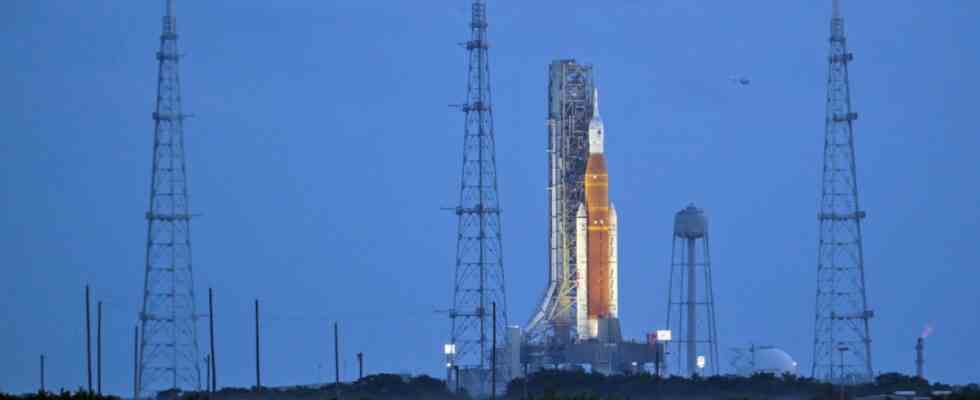After a first failed attempt last Monday, nothing came of the first, still unmanned flight of the Space Launch Systems (SLS) of Nasa into a lunar orbit. And this time things seem to be more serious. The first attempt to refuel the rocket with liquid hydrogen only resulted in a small leak, which was quickly sealed. However, the leak on Saturday, the cause of which is still unclear, apparently requires major repairs.
The rocket is supposed to go together with the space capsule Orion at the top one day bring people back into a lunar orbit, from where they are supposed to head for the earth’s satellite in a landing vehicle from the company Space-X. So far, the construction of the SLS billions of dollars in the Artemis mission and is years behind schedule – with the renewed failure on Saturday, the prospects have become even bleaker.
At first there was talk of a third attempt this Monday, but in a press conference on Saturday Nasa representatives rejected this plan. “Monday’s leak was a manageable leak,” said Artemis manager Mike Serafin. “This was unmanageable.” In addition to the leak, the pressure in one of the hydrogen lines was also too high. The reason for this and whether it was connected to the leak was initially unclear.
The next launch window opens on September 19th
start of SLS are possible for about two weeks each due to the constellation of the earth and moon and then ruled out for two weeks. The next launch window opens on September 19th. From today’s perspective, however, a start before October seems questionable. True, Nasa engineers have not yet decided whether the current leak can be repaired directly on the launch pad or whether this will be done in the assembly building. The launch ramp has the advantage that tests can be carried out there directly at extremely low temperatures. If repairs are carried out in the assembly building, the rocket must first be rolled back onto the launch pad to check whether the lines can withstand being refueled with liquid hydrogen at minus 253 degrees Celsius or not.
However, it has to SLS make a lap to the assembly building anyway, because the “Flight Termination System” certificate will expire by the next take-off window. The system is intended to ensure that the rocket can be destroyed in flight if it deviates too far from the course at launch. However, if the start does not take place within 25 days of the last test, the batteries must be reset in the assembly building. All of this contributes to the delay – apart from the fact that it is not yet clear what needs to be repaired in the first place.
On board of Orion are not people, but this time there are two dolls: Zohar and Helga. If the launch from the Cape Canaveral spaceport succeeds at some point, the spacecraft should orbit the moon. About 40 days later it will return to Earth and land in the Pacific.
In addition to NASA and the European Space Agency Esa, the space agencies of several other countries are also involved in the project with German and Israeli participation. It is being tested whether a protective vest developed in Israel can effectively protect a female body in particular from dangerous space radiation. US astronauts should actually land on the moon again by 2024, including a woman for the first time. This is now planned for 2025 at the earliest.
Unlike the competition rocket Starship of the private space company Space-X is that SLS not reusable, both the side-mounted boosters and the bright orange rocket first stage detach a few minutes after launch and crash into the sea. This also makes the system much more expensive than that Starship from Space-X, which is scheduled to launch into Earth orbit for the first time in the coming months. A SLS-Start can cost several billion dollars, depending on how you calculate it.

